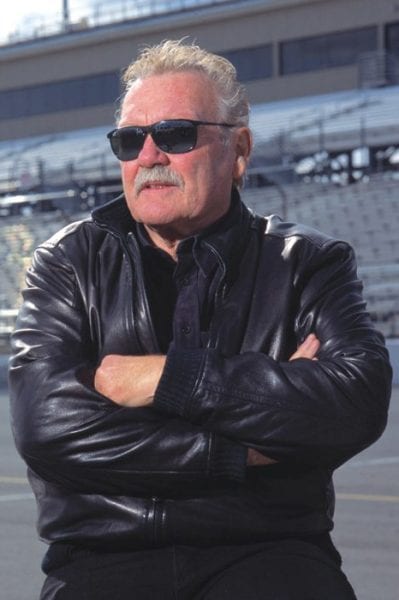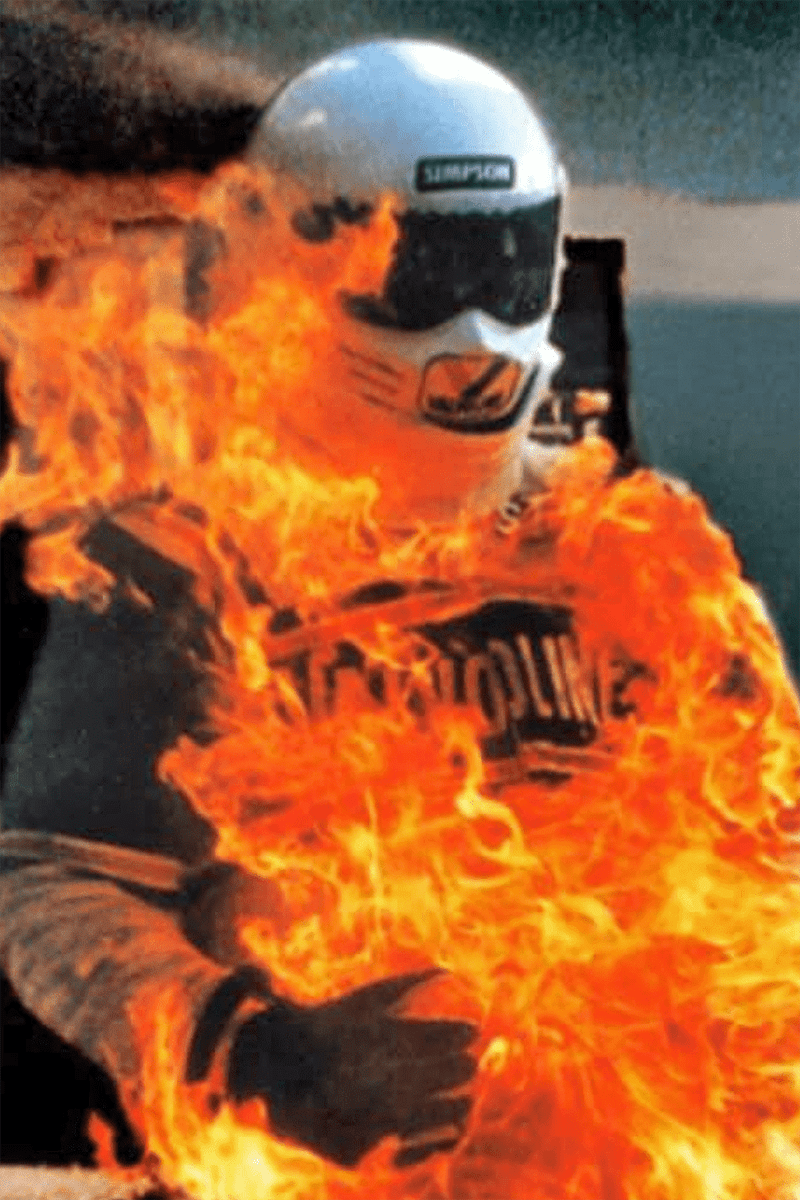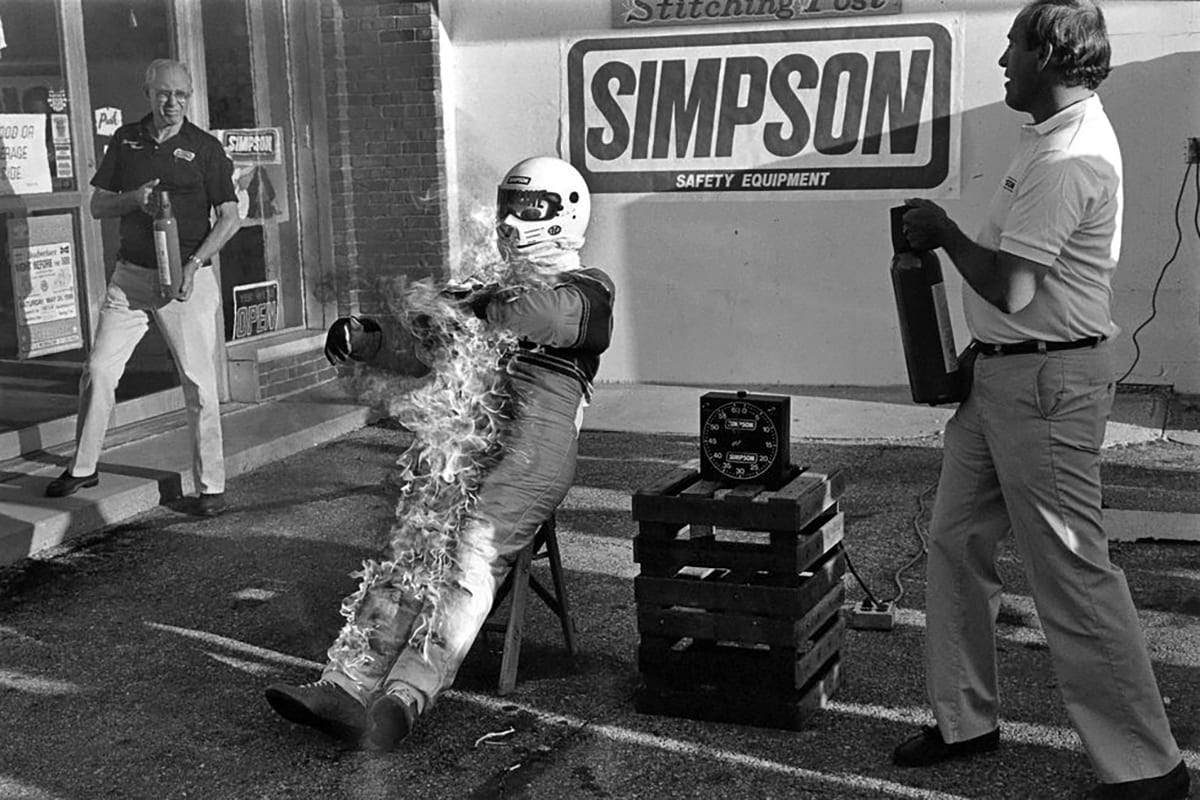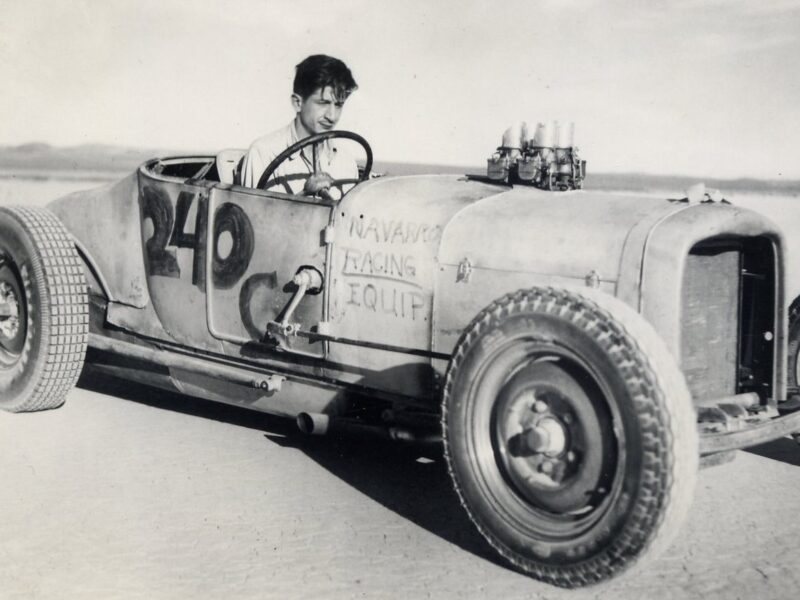Bill Simpson – Safety’s Celebrated Pioneer
Laying in a hospital bed, recovering from illness or injury, affords the mind a certain freedom to free-associate, to review life’s choices, map a new path forward. There is perhaps no greater example of this than the late Bill Simpson, the man who made safety as integral to motorsports as horsepower.
Simpson was born in Hermosa Beach, California, on March 14, 1940. He spent his early career racing drag cars and formula cars in SCCA, before moving up to the USAC Championship Car series in 1968. He would race there up until 1977, with 52 career starts. He even qualified for the 1974 Indianapolis 500, finishing a respectable 13th.
 But it was a during his recovery from two broken arms as an 18-year-old rookie drag racer that spun his life, and the lives of thousands of race car drivers worldwide, in a different direction.
But it was a during his recovery from two broken arms as an 18-year-old rookie drag racer that spun his life, and the lives of thousands of race car drivers worldwide, in a different direction.
Cooped up with matching casts, most racers would think, “How soon can I get back in the car?” Bill Simpson envisioned a bigger picture. “Until then, I was like most drivers,” he said in his Hall of Fame bio. “The only time I thought about safety was after I’d been hurt. This time, I was hurt bad enough to do a lot of thinking.”
And that thinking led him to his uncle, who happened to run a military surplus store, a store filled with used parachutes. What if, Simpson thought, a parachute could be used to slow down a dragster once it crossed the finish line? It wasn’t an entirely new notion. Others had kicked the idea around. Even Hot Rod magazine’s popular Stroker McGurk cartoon character used one in a 1952 comic. Today, nearly every high-speed dragster and land speed machine employs a ’chute to bring top speed down in a controlled manner.
The late NHRA legend Tom McEwen told an Indianapolis Star reporter in 2003, “I remember Bill in that garage, sitting at his sewing machine. I didn’t know if he was going to be successful, but I was hoping really hard that he was going to keep going, because we needed a guy like him who was interested in safety.”
If slowing down safely was an issue during this era, catching on fire was an even greater hazard. Two drivers – Eddie Sachs and Dave McDonald – died in a horrific flamed-fueled crash at Indy in 1964, a tragedy that triggered the use of fuel cells and replacing gasoline with methanol.
Still, the specter of fire was, and is, a constant in motorsports. Again, Bill Simpson to the rescue. In the late 1960s his friend Pete Conrad, a NASA astronaut, introduced him to a temperature-resistant DuPont fabric called Nomex. In 1967, Bill Simpson developed the first fire suit prototype for drivers, which he brought to the opening days of practice for the Indianapolis 500. By the time drivers heard the cry of “Gentlemen, start your engines,” 30 of the race’s 33 drivers were wearing a Nomex suits stitched by Simpson.
Nomex suits were adopted by drag racers soon after. Don Prudhomme once quipped, “We were wearing Levis and leather jackets, and he saved my ass a time or two with his Nomex suit.” Remember, Simpson’s interest was personal: He raced during this era, too. He was as vulnerable as any Unser or Andretti.
 Simpson was also a widely colorful character. In the ’70s, he sported a rock-star-like hairdo and a swoopy Fu Manchu mustache. His flamboyant style raised the eyebrows of the button-upped higher ups in USAC. When he finally qualified for the Indy 500 in 1974, the achievement was offset by angry race officials who were irked that Simpson set himself on fire in Turn One to prove the effectiveness of his latest suit.
Simpson was also a widely colorful character. In the ’70s, he sported a rock-star-like hairdo and a swoopy Fu Manchu mustache. His flamboyant style raised the eyebrows of the button-upped higher ups in USAC. When he finally qualified for the Indy 500 in 1974, the achievement was offset by angry race officials who were irked that Simpson set himself on fire in Turn One to prove the effectiveness of his latest suit.
Despite his years behind the wheel, his interest in driving never matched his zeal for safety. From suits, Simpson branched out into Nomex gloves, shoes, improved seat belts, and helmets. Simpson Safety Products were used worldwide. The word “Simpson” became synonymous with safety.
And then NASCAR legend Dale Earnhardt, a close friend of Simpson’s, was killed in a crash at Daytona in 2001 – an event that altered the arc of Simpson’s life. Earnhardt always played a bit fast and loose with safety. His seat wasn’t the best. He was known to loosen his belts during a race. And 2001 was long before HANS devices secured the driver’s head and neck during impacts. Still, NASCAR looked for a scapegoat to explain the loss of their sport’s biggest star.
So, NASCAR blamed a Simpson seat belt for Earnhardt’s death. Public outrage toward Simpson was immediate. His life was threatened by fans, forcing Simpson to resign from his company.
But NASCAR didn’t have the last word. In 2003, Simpson sued the sanctioning body for defamation of character, asking for $9 million in damages. “Those people declared war on me, but they didn’t know what kind of a fight they were in for,” he said in a 2004 interview with USA Today. “I’m a pretty mean son of a bitch, and they (expletive) with the wrong guy.”
The suit was settled out of court, and while terms were never divulged, Simpson would simply flash a sly grin when asked about the result.
Simpson’s death last year at age 79 from stroke complications elicited worldwide sympathy and fond remembrances. The entire racing world took note. Indy legend Al Unser, Sr. perhaps said it best upon hearing about Simpson’s passing: “Bill was a hippie when I met him and a cranky old guy most of his life, but he went from a nobody to the top of the heap. He worked hard and had a good mind – it didn’t go where the normal mind went. He’d piss people off one day and save a bunch of lives the next. That was Bill Simpson.”





